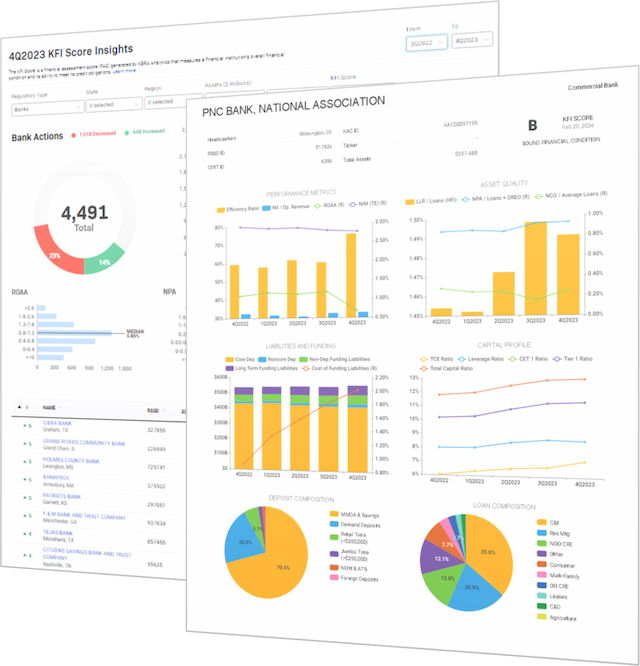KBRA Financial Intelligence
JPMorgan’s Takeover of First Republic
By KFI Staff
JPMorgan Chase bought substantially all of the assets of First Republic Bank after regulators seized the lender over the weekend in the second-largest bank failure in U.S. history.
The Deal:
JPMorgan, the largest U.S. bank by assets, adds another $92 billion in deposits, $173 billion in loans, and $30 billion in securities.
The FDIC and JPMorgan will share losses as well as gains on First Republic’s single-family mortgages and commercial loans.
The FDIC will provide JPMorgan with $50 billion in five-year, fixed rate financing.
The $30 billion in deposits First Republic received from 11 of the largest banks in March to shore up its liquidity will be repaid once the deal closes.
The FDIC estimates that the cost to the Deposit Insurance Fund will be about $13 billion.
Context
JPMorgan’s takeover ends the saga of First Republic, which mismanaged funding and interest rate risk, causing its shares to lose 97% of their value this year.
Following bank failures in March, depositors pulled about $100 billion from First Republic, which had developed a reputation for catering to wealthy clients.
Three of the top four largest bank failures in U.S. history have taken place in the last two months, with Silicon Valley Bank and Signature Bank as the third- and fourth-largest failures, respectively.
Bond losses from rapidly rising interest rates and fast-moving deposits helped spur the demise of the regional lenders.
Looking Ahead:
"This is getting near the end of it, and hopefully this helps stabilize everything," JPMorgan CEO Jamie Dimon said on a call with journalists after the deal was announced, Bloomberg reported. "The American banking system is extraordinarily sound," he added.
The Federal Reserve is meeting this week, and the central bank is expected to raise rates another 25 basis points to 5%.
Van's View:
"Investors need to pay as much attention to risks on the right side of the balance sheet—funding and liquidity—as they do to the risks on the left side in the loan and securities portfolios. In addition, markets got yet another lesson in the burden that supercharged-growth places on a financial intermediary; these stories often don’t end well." - Van Hesser, KBRA’s Chief Strategist
